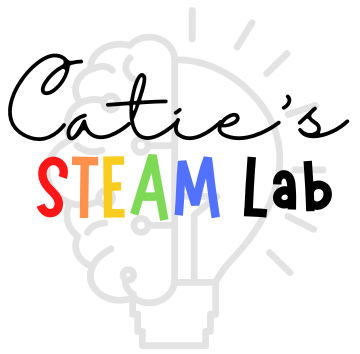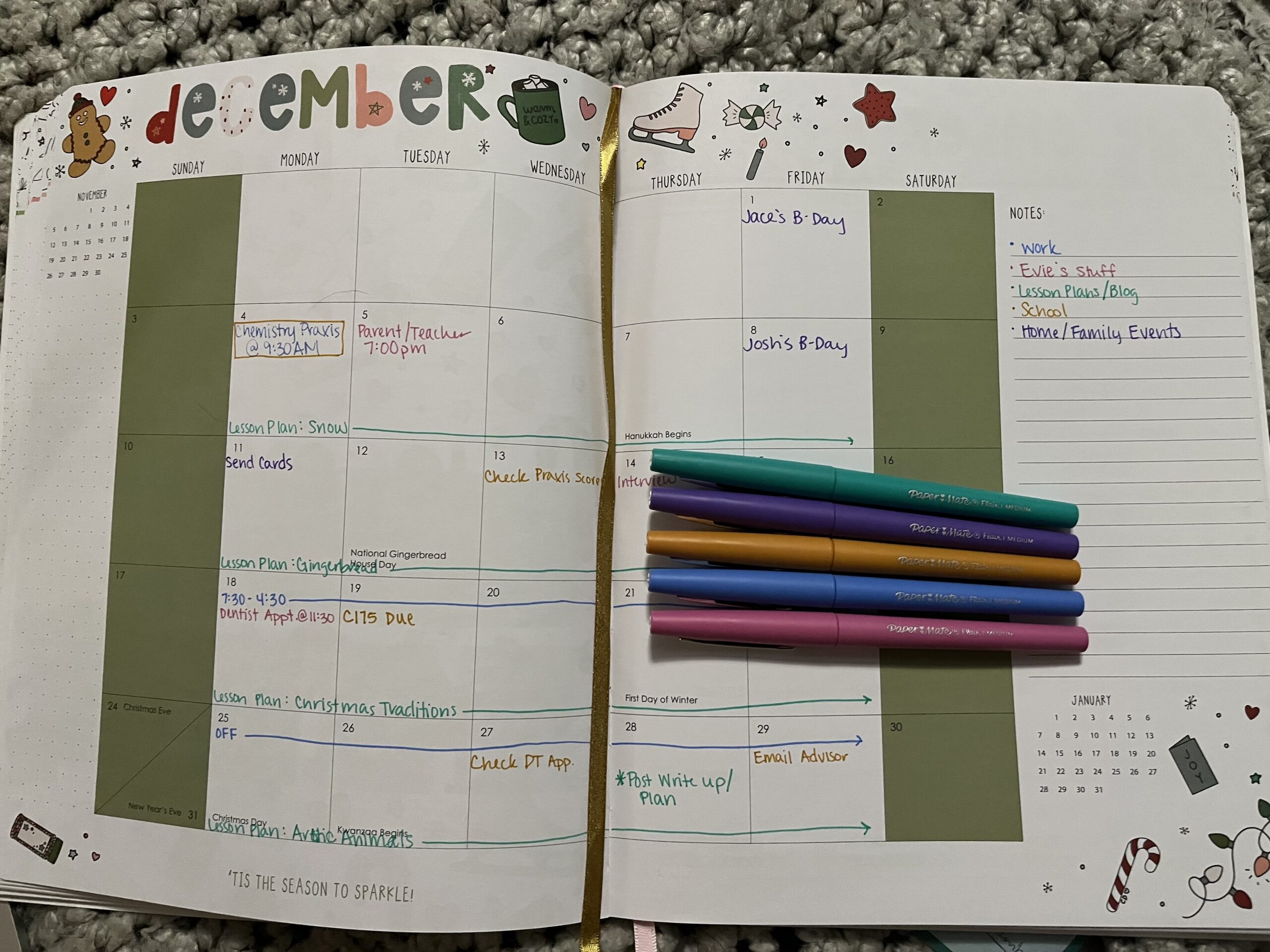Creating a toddler lesson plan can be a daunting task. What should my toddler be learning? What should I be teaching them? Are they developmentally ready for these lessons? How can I help my child reach that next stage? Is there more that I can be doing? These are all questions I have pondered, researched, and stressed over at least thirty times in the last month. If you are reading this, well, you have probably done the same thing.
As a preschool teacher, there are many helpful tips and ideas that I am more than happy to pass on. This experience has enabled me to help my daughter learn at home. Creating and maintaining a toddler ‘lesson plan’ keeps me and my daughter organized in our increasingly disorganized environment. Additionally, having this plan developed helps keep my little away from the TV!
This post may contain affiliate links, which means I’ll receive a commission if you purchase through my links, at no extra cost to you. Please read full disclosure for more information.
Here are the steps I go through when I design a ‘lesson plan’ for my 2-year-old.
Write Your Toddler Lesson Plan Down!
First, I need a place to write down my plan for the week, even for a month. When creating a lesson plan, I use a teacher planner. I enjoy having a hard copy of all of my plans in one place. These days I juggle, work, home life, Evie’s activities, blog posts, and school so I prefer a hefty, durable, color-coded planner. My planner will include a month view calendar, a weekly layout. I won’t lie…I have a small obsession with planners, paper, pens, markers. Let me tell you what, not all planners are created equal. I feel as though a good planner is the first step in created good lesson plans. If you start using a planner, decide you hate the planner and stop using the planner, then not only was it money wasted, but also time wasted.
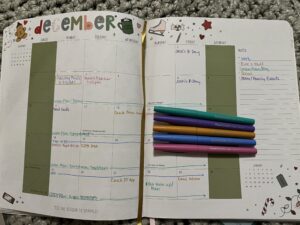
Some of my favorite planners are these undated teacher planners, perfect for starting right now with no wasted space, this planner with an hourly breakdown for those who run a very tight ship, this planner with some…colorful…language for my more cheeky friends, and this planner for my goals setters.
I won’t spend long on my favorite pens. The Papermate Flair pens are my go-to pens. I always have 5 or so with me and I very rarely have issues with them bleeding through the pages in my planner.
Maybe you decided that a color-coded, heavy planner doesn’t fit into your teaching/parenting style. I don’t blame you at all! My first leap into the lesson planning world happened with a single sheet of paper posted onto our fridge. This free preschool/toddler lesson plan template is one that I used to keep my days organized. It allowed me to see all the subjects and quickly lay out the whole week.
Milestones To Include In Your Toddler Lesson Plan
The next thing I think about when I am creating a lesson for my daughter is what milestones I’d like to work on with her. I typically pick 3-5 skills I would like to practice or develop for each plan. Evie is right at that point where scribbles are turning into consciously making marks on the paper. She’s drawing straight lines and attempting to draw circles. This indicates to me that she is starting to develop the fine motor skills needed for pre-writing. I know. It sounds funny. Pre-writing. I promise you I am not making it up.
Before moving on, I just want to stress that every child develops at a different rate. Each child will grow and bloom into the beautiful flower that they are in their own time. We can support and help our children when we can; however, if you have questions or concerns about your child’s development seek advice from your child’s doctor.
Using the CDC’s website, I try to keep myself informed about different milestones my child may be approaching. The Child Mind Institute is another resource I will use when I am looking at milestones for my child.
Based on my child’s age, I know that sorting by color and shape is one of the milestones that Evie should be reaching. I will keep this in mind when I start planning her ‘lessons’. For this next lesson, my areas of focus will be helping Evie develop her pre-writing skills, learn colors and shapes.
Fancy Language Alert! I am currently working on completing a Master’s degree in teaching. One of the course that I was required to take, and actually learned a ton in was Educational Psychology and Child Development. In this course I learned about Lev Vygotsky’s Zones of Proximal Development and the concept of scaffolding. Vygotsky’s ZPD is described as levels of learning. There are things children/students can do unassisted, things children/students can do with assistance, and things children cannot do. When teaching a child, it would not be beneficial to plan an entire lesson based on things children can already do without help. They have essentially mastered that topic/activity. It would also be ill-advised to plan a lesson in which children cannot possible do the activity. Finding that area between the two, there area where children can learn with assistance, is where you want to start your lessons. Using the concept of scaffolding, a teacher helps a child go from a mastered area to higher more advanced level of an activity. Scaffolding occurs when a teacher uses knowledge the child already has and builds upon that knowledge with new information or new skills.
For example, now that Evie has shown more control in her drawings by drawing straight lines, I have started to work with her to develop her tripod pencil grip. This transition from a fist hold to a tripod grip is a good middle ground to help her develop writing skills. Evie can already demonstrate a basic level of control. With assistance, she can start holding the marker in a proper tripod fashion. However, she is not ready to start writing. Understanding where your child is, where they are heading, and steps in between can create a more effective lesson plan for your child.
Create Exciting Experiences
Now that I have goals for my child. I can start developing activities for her to do during the week to help her reach these milestones. Sometimes I find it easier if I have a theme for the week. This is another area where you can personalize the lesson to your child by including their likes and avoiding their dislikes. Let’s face it. A toddler’s attention span isn’t very long, if your child is not interested in the lesson, it’s even less. With this in mind, Evie is going through a HUGE dinosaur phase. Naturally, if it’s involving dinosaurs, I have her attention for that much longer. If your child is obsessed with trucks, that makes a wonderful lesson theme. Some other themes include, Fruits/Veggies, Ice/Snow, Holidays, Space, Zoo Animals, Artic Animals. The list is only limited by your imagination and your child’s interests!
I also like to plan my toddler ‘lessons’ around various subjects. These subjects include language and literature, math, science, creative arts, and physical education. There are other topics you can include so please do not feel limited by these. Social and Emotional learning is also a great topic to include.
Now that I have a general layout, a theme, and skills to develop, I work on creating activities for us to do. This is typically the most fun, but also the part that takes the most creativity. My dinosaur themed activity for Science/Sensory is simply called fossils. We have a wonderful museum that has dinosaur fossils on display. They also have an interactive ‘fossil dig site’ for children to become little paleontologists themselves. I actually used the museum as the introduction to this ‘lesson’. Evie loves looking at displays and discovering new things. I highly encourage you to utilize the resources that are available to you in your community. Science for toddlers and preschoolers is discovering the natural world around them. Integrating trips to the zoo or museums not only allow your child to have a learning experience, they create excitement and encourage their natural love for learning.
I went on a tangent. I know. Sorry about that. Anyways…my fossil activity is actually a super simple activity. I use clay, create disks for Evie to press her dinosaurs into the clay. Now you can stick with the simple activity. That is totally fine. Or you can jazz it up. Evie has shape blocks. We used shape blocks to create ‘fossils’ in the clay as well as our mini sorting dinosaurs. I love these dinosaurs because they are great for color recognition. Adding in this element creates a super easy way to introduce one of the skills that I am working on: shape recognition. Again, this is a perfectly good activity. It is engaging and addresses a skill. It creates opportunities for your child to be an active learner. You could stop here. Or you can keep going. Bake the clay, let it harden into ‘real’ fossils and bury them in sand, crushed graham crackers, outside in soil/dirt. Let your child get archeological tools and ‘rediscover’ their fossils. Allow your child to become excited about their fossils all over again! What shape did they find? How does the fossil look and feel? Is it big or small? The applications to this activity can go on and on. Pretend play is a major milestone that toddlers and preschool children reach and is an important aspect to cognitive development.
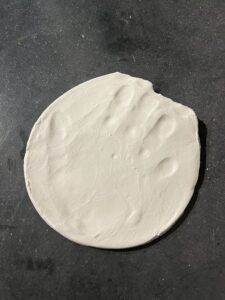
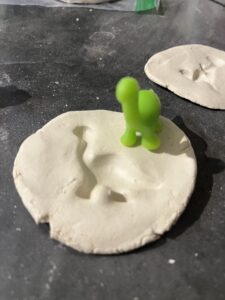
I won’t lie. When I was 5, I totally walked around telling everyone that I was going to be a paleontologist when I grew up after our trip to see dinosaur fossils. Spoiler Alert. I’m not a paleontologist, but I do appreciate rocks and fossils to this day. Immersing your child into the topic they are learning is a great way to ensure that your child is engaged with the activity and also sneak in the not-so-fun stuff they might not be as interested in. Essentially, this is the educational version of hiding the broccoli and ham in the mac and cheese.
Overall, when creating a lesson for your child or children. It is important to think about three things:
- Where are they developmentally.
- What skills are they learning?
- How can you incorporate their interests to increase their engagement?
It honestly takes a village, and I’m so honored to be a part of yours! Keep your eye out for my FULL dinosaur toddler/preschool lesson plan! Creativity can sometimes be the hardest part of this entire process! Do you have an idea for a lesson plan, or have you done any that your children loved? Feel free to share your ideas on themes or activities below.
